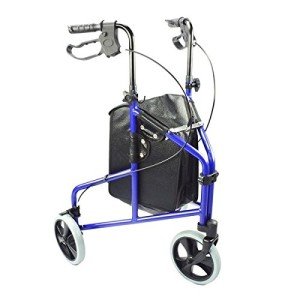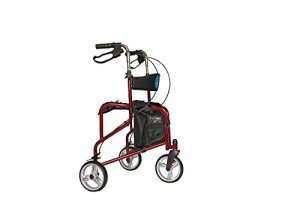walking-frame5209
walking-frame5209
The 10 Most Terrifying Things About Modern Walker
The Modern Walker: Revolutionizing Mobility for All
In the pursuit of flexibility and ease, the modern walker has actually evolved from a standard mobility aid into an advanced device developed to boost the quality of life for people with minimal mobility. Whether due to age, injury, or special needs, the need for effective mobility solutions is universal. This post will delve into the attributes, benefits, improvements, and factors to consider surrounding modern walkers, in addition to a frequently asked questions (FAQ) section to address typical inquiries.
Evolution of Walkers
Conventional Walkers
Conventional walkers, often constructed from aluminum or steel, typically include a rectangle-shaped frame with 4 legs and no wheels. These standard designs offer stability however can be cumbersome, requiring users to lift the device instead of push it. As a result, their use often positions excessive stress on the upper body and minimizes mobility efficacy.
The Transition to Modern Walkers
In the previous couple of decades, the style and functionality of walkers have transformed significantly. Modern walkers typically consist of features such as:
- Wheels: Many new models now include wheels on the front legs, allowing users to press rather than lift the device.
- Seats: Some walkers come geared up with a seated location, offering users with a location to rest when required.
- Adjustable Heights: Height-adjustable choices enable personalized fit, dealing with specific user requirements.
- Ergonomic Grips: Improved grip styles enhance comfort and support, reducing stress on hands and wrists.
This evolutionary shift not only supports much better mobility but likewise increases self-confidence, independence, and safety for users.

Benefits of Modern Walkers
Modern walkers come with an array of advantages for people seeking support in mobility. These benefits transcend simple physical support, contributing favorably to mental and psychological health too.
Increased Mobility and Independence
Modern walkers empower users to navigate their environment more easily. Features such as wheels and lightweight styles assist in ease of motion, permitting users to preserve autonomy in daily activities.
Boosted Safety
The incorporation of safety functions in modern walkers plays a crucial function in preventing falls and injuries. Anti-slip grips and larger bases of support contribute to stability, therefore reassuring users about their safety while walking.
Multi-functionality
Numerous modern walkers provide multifunctional styles, acting as both a mobility aid and a storage solution. With functions like integrated bags and trays, users can bring essentials and individual products, making getaways with these walkers easier.
Mental and Emotional Well-being
Improved mobility can significantly affect an individual’s mental health. Less reliance on caretakers and the capability to take part in social interactions can cultivate a sense of belonging and improved morale.
Features to Consider When Choosing a Modern Walker
When selecting a modern walker, various functions should be taken into account to guarantee it meets the user’s needs optimally. Here, we provide a list of crucial factors to consider:
- Weight and Material: Opt for lightweight materials that still use sturdiness and stability.
- Wheels: Decide in between walkers with front wheels or fixed legs based upon the user’s level of mobility.
- Seat Availability: For those who require rest breaks, choose a walker with a built-in seat.
- Storage Options: Look for designs that include storage bags or trays for carrying daily basics.
- Height Adjustability: Ensure the walker is height-adjustable to promote correct posture and comfort.
- Foldability: A foldable walker can supply ease in transport and storage.
Typical Types of Modern Walkers
The marketplace today offers a range of walker types customized to various requirements. Below are some typical alternatives:

- Standard Walkers: Basic models without wheels, ideal for users who need considerable stability.
- Rolling Walkers (Rollators): Feature wheels on all four legs and typically include seats, catering to those seeking mobility and resting opportunities.
- Upright Walkers: Designed for users intending to keep better posture while walking. These gadgets motivate an upright position, relieving pressure on the back.
- Transportation Walkers: Lightweight and compact; typically created for short distances and quicker mobility for caretakers.
| Walker Type | Key Features | Best For |
|---|---|---|
| Standard Walker | Lightweight, no wheels | Maximum stability |
| Rolling Walker | 4 wheels, typically a seat | Increased mobility |
| Upright Walker | Promotes upright posture | Neck and back pain alleviation |
| Transport Walker | Compact and lightweight | Caregivers and short distances |
FAQs About Modern Walkers
What is the very best type of walker for seniors?
The very best walker for seniors largely depends on their physical condition and mobility levels. Many choose rolling walkers due to their ease of use, while those with greater stability requirements may gain from standard walkers.
How do I ensure a proper suitable for my walker?
To guarantee a proper fit, stand inside the walker with your arms hanging easily at your sides. Your elbows must be somewhat bent when holding the walker deals with. Change the height up until it lines up completely.
Can walkers easily be transported?
Yes, many modern walkers are developed to fold for easy transportation. Models such as transport walkers are particularly lightweight and compact, making them suitable for travel.
Are walkers covered by insurance coverage?
Lots of insurance strategies, consisting of Medicare and Medicaid, might cover the cost of walkers when recommended by a health care provider. It is advised to confirm coverage information with your insurance coverage company.
How can I keep my modern walker?
Regular checks must be performed for any loose screws, frame stability, and wheel performance. Tidy the walker occasionally to keep hygiene and curb wear.
The modern walker represents a substantial development in mobility aids, improving the self-reliance and self-confidence of users. With various types, functions, and considerations offered, selecting the right walker can significantly improve mobility and total lifestyle. Comprehending these tools empowers users, caregivers, and health care professionals alike to cultivate a supportive, active community for those needing assistance in mobility. The modern walker is not just a device; it is a bridge to flexibility and self-reliance.



